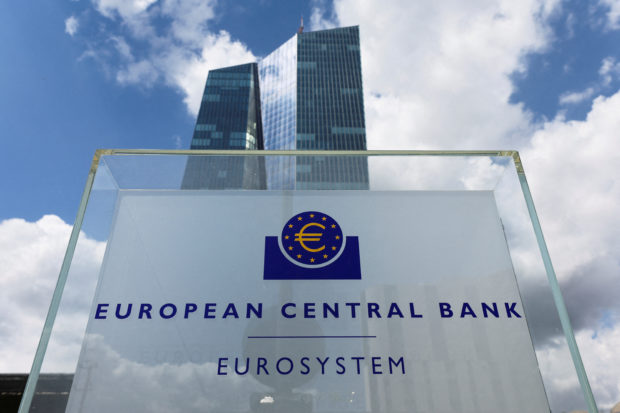ECB raises rates to 23-year high; keeps options open for September

FRANKFURT -The European Central Bank raised interest rates for the ninth consecutive time on Thursday and kept the door open to further tightening as stubborn inflation and a growing risk of a recession pull policymakers in opposing directions.
Fighting off a historic surge in prices, thehas now lifted borrowing costs by a combined 425 basis points since last July, worried that excessive price growth could be perpetuated via wage rises as the jobs market remains exceptionally tight.
With Thursday’s 25 basis point move, the‘s deposit rate stands at 3.75 percent, its highest level since a similar level set in 2000, before euro banknotes and coins had even been put into circulation. The main refinancing rate was set at 4.25 percent.
“Future decisions will ensure that the keyinterest rates will be set at sufficiently restrictive levels for as long as necessary to achieve a timely return of inflation to the 2 percent medium-term target,” thesaid in a statement.
But the‘s statement dropped a reference to rates having to be “brought” to a level that cuts inflation quickly enough, a nuanced change that could be seen as a signal that further increases are not a given.
This will leave investors guessing whether another rate hike is coming or if July marks the end of the‘s fastest-ever tightening spree.
It is nevertheless increasingly clear that an end to rate increases is fast approaching, with policymakers debating whether one more small move is needed before rates are kept steady for what some of them think will be a long time.
“The Governing Council will continue to follow a data-dependent approach to determining the appropriate level and duration of restriction,” theadded.
The‘s problem is that inflation is coming down too slowly and could take until 2025 to fall back to 2 percent, as a price surge initially driven by energy has seeped into the broader economy via large mark-ups and is fueling the cost of services.
READ: Euro zone inflation falls again in June as energy prices tumble
While overall inflation is now just half its October peak, harder-to-break underlying price growth is hovering near historic highs and may have even accelerated this month.
The labor market is also exceptionally tight, with record-low unemployment raising the risk that wages will rise quickly in the years ahead as unions use their increased bargaining power to recoup real incomes lost to inflation.
That is why many investors and analysts are looking for theto pull the trigger again in September and stop only if autumn wage data delivers relief.
Recession?
But the mood is clearly changing as the economy of the 20-country euro zone slows. While markets had fully priced in another rate hike just a few weeks ago, a growing number of investors are betting that Thursday’s move will be the last.
More tightening would however be consistent with comments from a host of policymakers, includingboard member Isabel Schnabel, that raising rates too far would still be less costly than not lifting them high enough.
On Wednesday, the U.S. Federal Reserve raised borrowing costs and kept the door open to further tightening, though Fed Chair Jerome Powell gave few hints about September, a stance theis likely to copy.
READ: Fed raises interest rates, leaves door open to another increase
But rapidly fading economic prospects should temper any hawkishness andPresident Christine Lagarde is likely to take a cautious tone in her 1245 GMT news conference after a string of data in recent days suggesting that higher rates are already weighing on growth.
READ: Euro zone factory downturn deepens in May despite price cuts
Indicators of business, investor and consumer sentiment and bank lending surveys point to a continued deterioration after the euro zone skirted a recession last winter.
And with manufacturing in a deep recession and a previously resilient services sector showing signs of softening despite what is likely to be a superb summer holiday season, it is hard to see where any rebound would come from.
Such weakness, exacerbated by a loss of purchasing power after inflation eroded real incomes, could push down price pressures faster than some expect, leaving less work for the central bank to do.
This is a key reason why the balance of expectations has started to shift away from another rate hike, with economists increasingly focusing on how long rates will stay high.